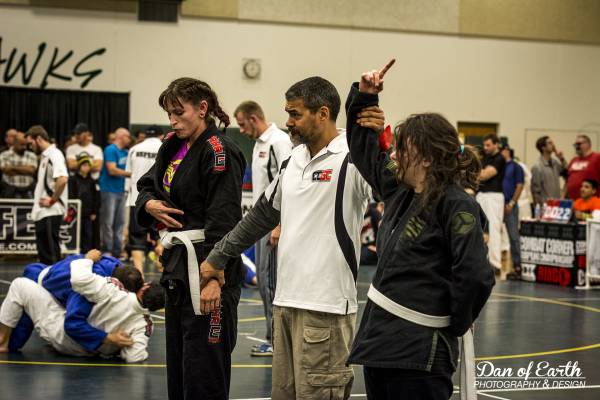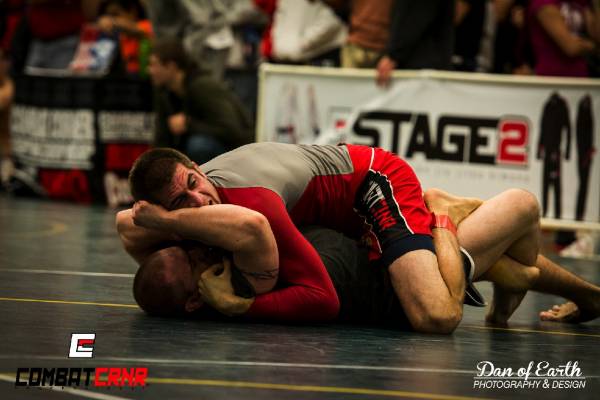What weight class should I compete in? This is the hardest question to answer for many Brazilian jiu jitsu competitors.
If you walk around a BJJ tournament, you will overhear competitors talking about their weight cut. You may hear how difficult the cut was. Or how hungry and thirsty they are. It appears from the outside that everyone should cut weight. In reality, it should be the opposite.
Most competitors should not cut weight. Weight cutting should be used by select individuals and only for specific tournaments.
Cutting Weight Versus Body Fat Reduction
Before we can dive into the specifics of who should cut weight and when, let’s define what weight cutting is. Cutting weight is the rapid loss of weight during the last week before a tournament, often involving fluid and/or food restriction. Lowering body fat is a longer process that involves the reduction of fat and an increase in muscle.
“When competitors cut weight by restricting fluid and food, performing at a high level is going to be a challenge.”
Why BJJ Athletes Cut Weight
Competitors think that cutting weight is going to give them a higher chance of winning. By dropping down to a lighter weight class, he or she is looking to gain a size and strength advantage. But the size and strength advantage will only be a benefit if he or she is able to perform. When competitors cut weight by restricting fluid and food, performing at a high level is going to be a challenge.
Weigh-In Timing and Gi Versus No Gi
Depending on the tournament, weigh-ins can be the same day of competition or the day before. IBJJF tournaments require competitors to weigh in minutes before stepping on the mat – while wearing the uniform in which they are going to compete.
For a gi tournament, the competitor must weigh in with the gi on. The gi will add an additional three to five pounds of weight. In no-gi competition, the athletes must weigh in while wearing their shorts and rashguard.
In an IBJJF tournament, the time between stepping on the scale and competition is too small for cutting weight. Other tournaments offer competitors the option to weigh in the day before. So, for a Saturday tournament, competitors are allowed to weigh in the Friday before. (More on who should or shouldn’t cut weight for day-before weigh-ins below.)
Why BJJ Athletes Should Not Cut Weight
The majority of BJJ competitors should not cut weight. This may be the opposite of what most people think, but from a performance standpoint, cutting weight for a tournament is not ideal.
The fact is that when two competitors meet in the later rounds of a tournament, they are both are skilled. If they were not, they would have lost before this point. Now imagine one competitor has cut weight, drinking little water and eating barely anything in the days before the tournament in order to make the cut. The second competitor chose not to cut. He ate a good breakfast and has been drinking plenty of water. The second competitor is going to be able to push harder than his opponent. With skill being equal, the competitor who is able to push harder is going to win. When the body is depleted of nutrients, performance is also depleted.

Cutting Weight is a Mistake for Beginners
A mistake new competitors make is trying to follow the training methods of more advanced competitors. Competitors in the white-belt level are cutting weight for a tournament. Even worse, they are cutting weight for a small local tournament. As a beginning competitor, the focus should be on BJJ itself. The stress of cutting weight is not necessary. Focus on your training. It does not matter if you cut twenty pounds for a tournament. If you do not know how to escape the mount, it will not make a difference.
The majority of BJJ competitors work full time and compete for fun. Competitors at the master and senior level have to balance the stress of work, family, and training. All that stress is going to negatively affect hormone levels. Adding in the stress of cutting weight on top of all that will further reduce performance instead of help it.
“With skill being equal, the competitor who is able to push harder is going to win. When the body is depleted of nutrients, performance is also depleted.”
BJJ Athletes Who Should Cut Weight
The only people who should cut weight are high-level competitors competing in a tournament with day-before weigh-ins. Remember, cutting weight means a rapid loss of weight often involving fluid and/or food restriction. With day-before weigh-ins there is enough time to replenish fluid and nutrients that have been depleted. If done properly, 24 hours is enough time to replenish.
Additionally, the only guys who should be cutting weight are the brown and black belts. That does not mean the average brown belt should cut weight. It means brown or black belts who make their living or plan to make their living through BJJ can cut weight.
The first few times a competitor cuts weight are not going to be fun. Your first tournament as a brown belt is not the best time to try your first weight cut. Instead do a few practice cuts when you don’t have a competition coming up. Many academies have open mat on Saturday. Pick an open mat training session and pretend it’s a tournament. Follow your weight-cutting plan as you would for the real event. Weigh in on Friday. Then, on Saturday, head to your open mat and roll hard like in competition. Make note of how the whole process went and how your performance feels. Adjustments may need to be made, but it is better to find out ahead of time than at a real tournament.
Again, all this applies only to day-before weigh-ins. Same-day weigh-ins are a game changer even for the high-level brown and black belts. Weight cutting is never recommended in that scenario.

Alternatives to Cutting Weight
Up to this point we have focused on the rapid reduction of weight that should be done by only a select few. On the other hand, everyone can benefit from improved body compensation. BJJ competition requires the participant to perform at a fast pace for at least five minutes. Depending on the tournament size, a competitor can expect multiple matches during each of which he or she must maintain a high performance level.
“Same-day weigh-ins are a game changer even for the high-level brown and black belts. “
To get an edge over the competition, a competitor should carry a high strength-to-weight ratio. Improving this ratio requires the competitor to focus on nutrition and strength training for months, if not years, leading up to a competition. If your goal is to compete at the Pan Ams, then all your efforts should focus on that. Slow and steady strength gains and body fat reduction will add up. All the other tournaments leading up to the Pans are just warm-ups. Show up and compete at whatever weight you are.
Conclusion
Cutting weight is not for everyone. For newer competitors, time and effort should be spent on learning Brazilian jiu jitsu, increasing strength, and reducing body fat. The only competitors who should cut weight are those in the brown and black belt categories and for tournaments that allow day-before weigh-ins.
Photos courtesy of Dan Halpin.






